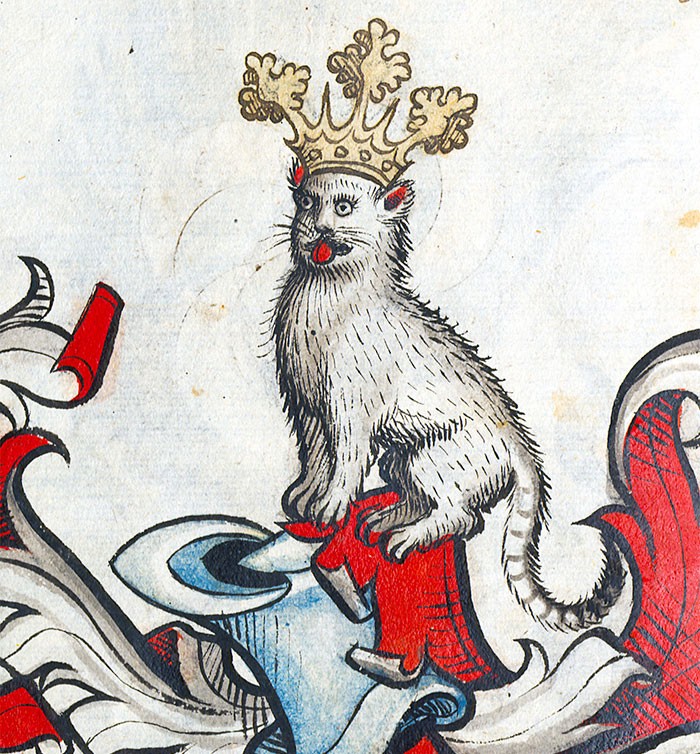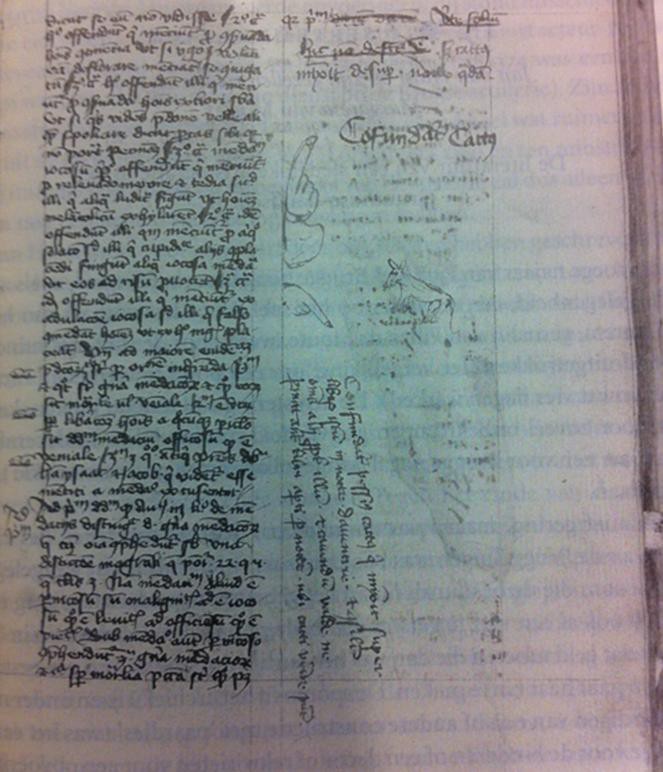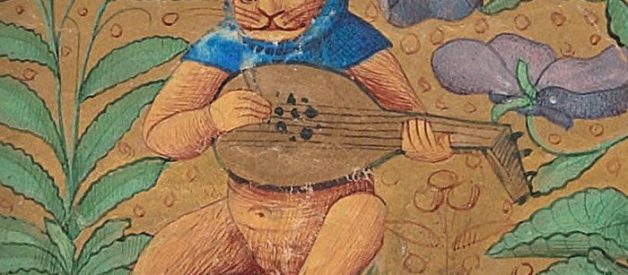An investigation into art history?s strangest meme
 Image: National Library of France / Folia Magazine
Image: National Library of France / Folia Magazine
Call it the Cats (2019) Effect or an escape from our incessantly chaotic timeline, but in recent months, Medieval cats have quietly erupted in meme popularity. If you?ve ever seen one, you know exactly what I?m talking about.
?Those cat paintings always look like someone told the painter what a cat was, but didn?t bother to explain that they aren?t tiny humans who are haunting the homes of noblemen,? creative director and feline enthusiast Roger Feeley-Lussier told me.
?Medieval cats look like someone watched a blurry DVD rip of the movie ?Cats? and then forgot how to paint,? social media manager and meme historian David Russell echoed.
Exhibit A:
 What is he king of? I don?t want to find out. Image: Wikimedia Commons
What is he king of? I don?t want to find out. Image: Wikimedia Commons
The sheer absurdity of these drawings raises some flags. Were cats simply body snatched for a few hundred years? Were they ephemerally replaced by humanoid fur demons, or did the monks who wrote manuscripts just really prefer dogs?
All cats are a little demonic, as their humans would probably attest to. It turns out Medieval scribes were maybe just a little more on the nose about it.
?In the Medieval period, animals were understood to be the mirror of human society,? historian Damien Kempf, who is writing a book on Medieval depictions of animals, told me. ?Even though animals were believed to be irrational beings, they were given human traits and characteristics.? Dogs, for example, were lauded for being loyal companions, created to guard the house and assist in the hunt.
Cats? Not so much.
?Sources emphasize the rather unruly nature of cats,? Kempf said. ?Unlike dogs, cats cannot be trained to be loyal and obedient. As one author complains, they will go to whoever gives them food.? So that?s one reason cats probably got such an unflattering edit.
I mean, come on:
 Image: National Library of France
Image: National Library of France
Truthfully, cats love to do bad things on purpose. They knock over fragile objects for no reason. They engage in low-grade household crimes that, if a human committed, would result in complete social exile: for instance, my cats used to shred our toilet paper so much my husband had to install a little metal house around the roll so our horrible sewer daughters could no longer leave their mess all over the bathroom floor.
So yeah, cats delight in a little human suffering. There is at least one recorded instance of a cat pissing all over a monk?s manuscript, ruining what was probably weeks or months of work:
?Here is nothing missing, but a cat urinated on this during a certain night,? the scribe lamented. ?Cursed be the pesty cat that urinated over this book during the night in Deventer and because of it many others [other cats] too. And beware well not to leave open books at night where cats can come.?
 Words from a very pissed-off monk?no pun intended. Those fingers point to the pee stains. Source: Cologne, Historisches Archiv, G.B. quarto, 249, fol. 68r
Words from a very pissed-off monk?no pun intended. Those fingers point to the pee stains. Source: Cologne, Historisches Archiv, G.B. quarto, 249, fol. 68r
Besides their naturally chaotic behavior, cats were also believed to be associated with dark forces.
?Their ability to see in the dark was often associated with heretics, who ignored the light of Christ and preferred to stay in darkness,? Kempf said. ?That?s what created the legend of the black cat, which symbolizes the devil ?it goes back to the 12th century at least.?
Medieval animals ? including cats?were frequently drawn with ?scary? anthropomorphic facial expressions to distinguish their untamed nature from their ?civilized,? pious human counterparts.
?In most cases, humans are represented with neutral facial expressions, since a good Christian is one that manages to control and temper their emotions,? Kempf said. ?Creatures believed to be close to the devil are shown with all kinds of scary or funny facial expressions.?
Medieval monks might have thought of cats as being a little demonic, and they were only half-right. Cats are food-loving, attention-seeking miscreants?but that?s exactly why we love them.
Anyway, here?s ?Wonderwall?:
 Image: Beinecke Rare Book and Manuscript Library / Discarding Images
Image: Beinecke Rare Book and Manuscript Library / Discarding Images


